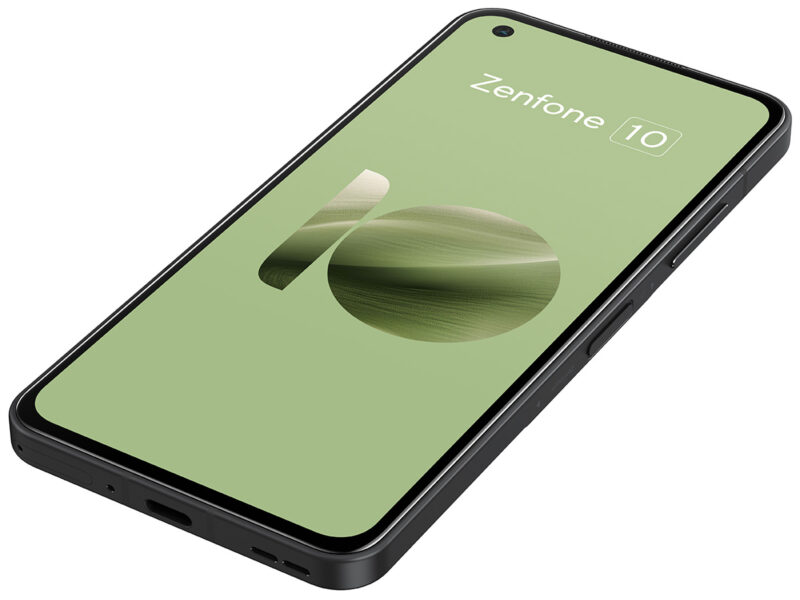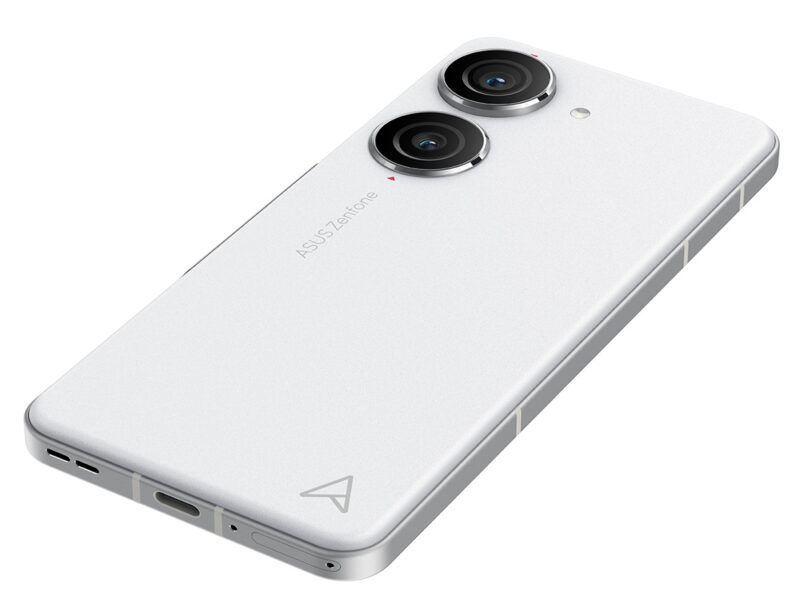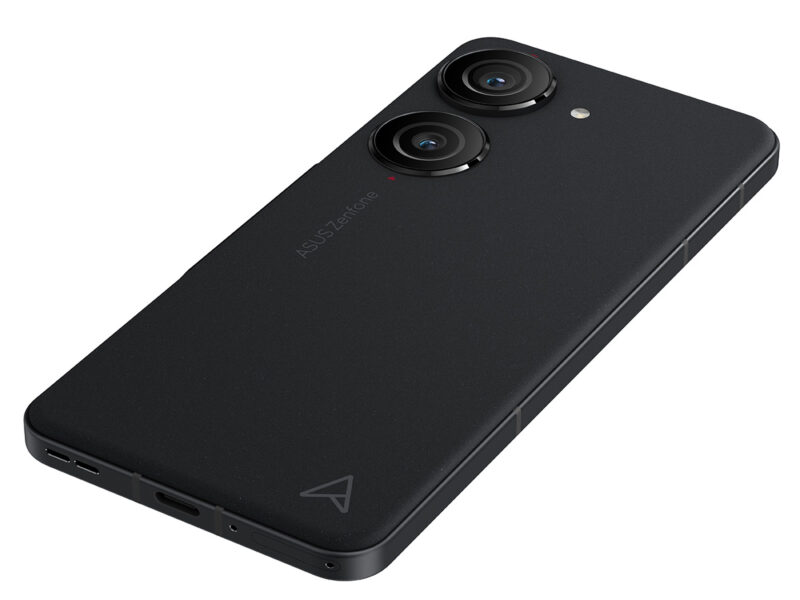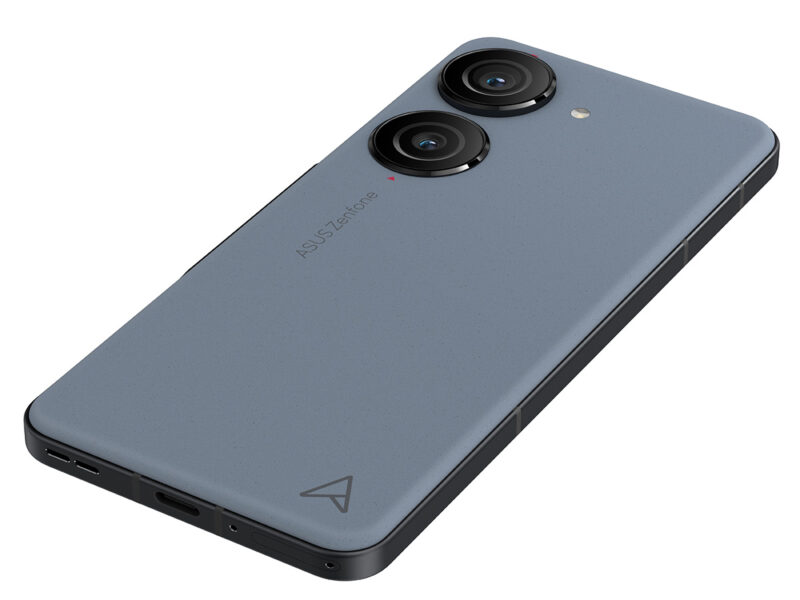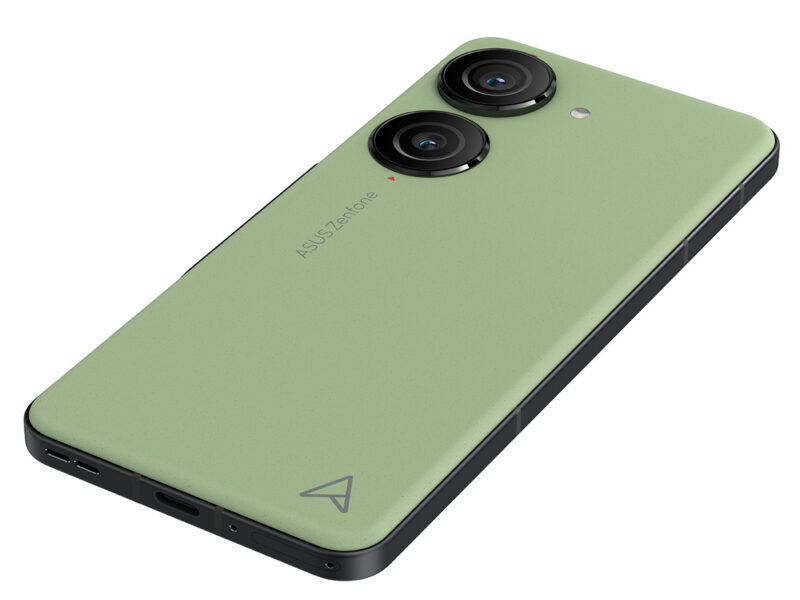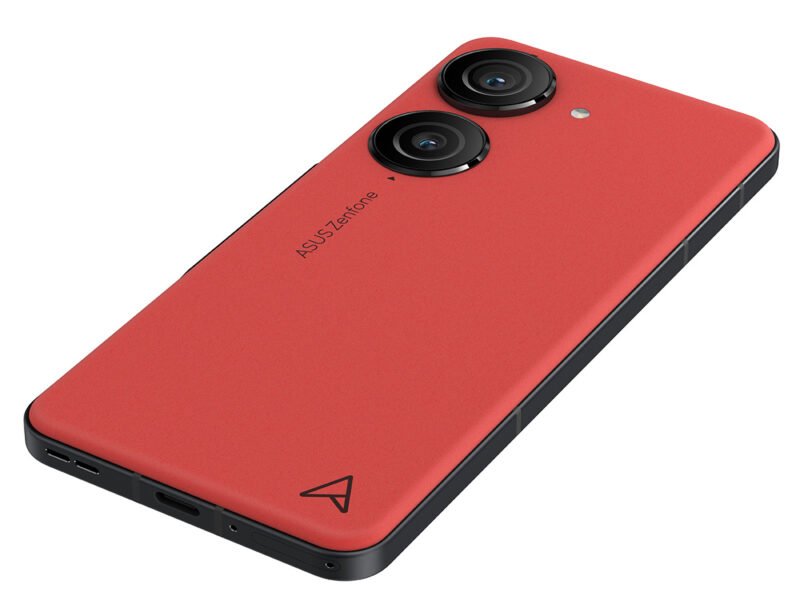Although Asus is a large electronics manufacturer, the company is one of the smallest in the mobile phone market. So it’s only fitting that their smartphones are also quite small – but with great electronics.
The Asus Zenfone 10 is a relatively compact mobile phone with a diagonal measurement of 5.9 inches. That’s between half an inch and a full inch smaller than its competitors’ top models, making it significantly more pocket-friendly.
Just like its predecessor.
Zenfone 9 puts all the brand-name phones behind it with high-end performance at a premium price. And the camera is awesome.
Fits big brother’s hand-me-downs
In fact, the external differences between the Zenfone 9 and Zenfone 10 are so small that you can use the same mobile cover on both!
The screen is once again an AMOLED display with FHD+ resolution (2400 x 1080 pixels). The refresh rate has improved slightly as the display now supports variable refresh up to 144 Hz, where it was 120 Hz on the Zenfone 9.
Integrated gimbal
The camera section on the back is the most striking feature of the Zenfone 10, and it’s virtually identical to its predecessor in every way. Two huge “portholes” (21 mm in diameter) cover a 50 Mp wide-angle and a 13 Mp ultra-wide-angle respectively. The large camera openings are due to the main camera being suspended in a stabilising gimbal!
Although the movement of the gimbal must be measured in millimetres, it actually provides a full three degrees of stabilisation during video recording. And together with software-based stabilisation, where part of the image field is cut away to centre the rest, the Zenfone 10 can actually correct as much as 11 degrees of displacement.

Stable in rough conditions
The Zenfone 9 also had this feature, and this writer can confirm that the stabilisation works. Even when you’re on a RIB boat pounding the tops of waves at over 100 kilometres per hour, the image is stable!
Image stabilisation is slightly improved on the Zenfone 10, as autofocus is now used to stabilise in the depth plane.
The selfie camera has received a substantial upgrade from 12 Mp to 32 Mp.

No telephoto lens – but still improved telephoto
The Asus Zenfone 10 still only has two cameras on the back, so we have to do without a real telephoto lens. Considering the price (and the space a telephoto with periscope like on the Google Pixel 7 Pro would require in the case), this is fair enough. But for a top-of-the-range model, it’s a stretch.
To make up for it, the performance of the main camera zoom has actually been improved. Creative use of artificial intelligence on the raw data from the sensor has managed to extract more information from the camera at medium zoom distances. This means that 4x or 5x digital zoom shots are actually more usable than usually on dual-camera mobiles.
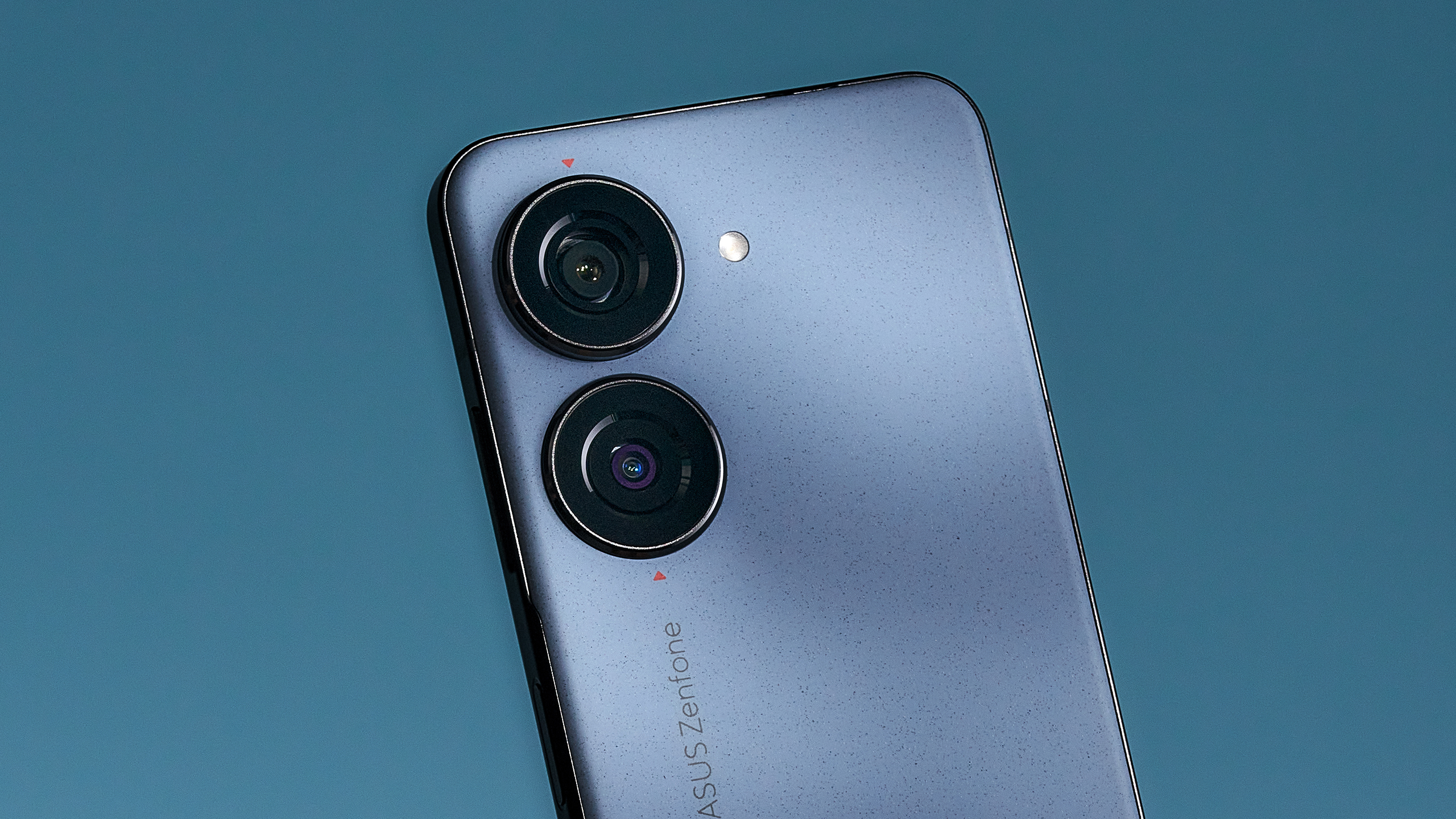
The best mobile processor today
While the screen and camera section are virtually unchanged, the Zenfone 10 is equipped with the latest and most advanced mobile processor from Qualcomm, the Snapdragon 8 Gen 2, which is probably the best mobile processor on the market at the time of writing. It can be found in the Samsung Galaxy S23 Ultra, where it, in the words of my colleague Peter Gotschalk, “performs like a nuclear power plant”.
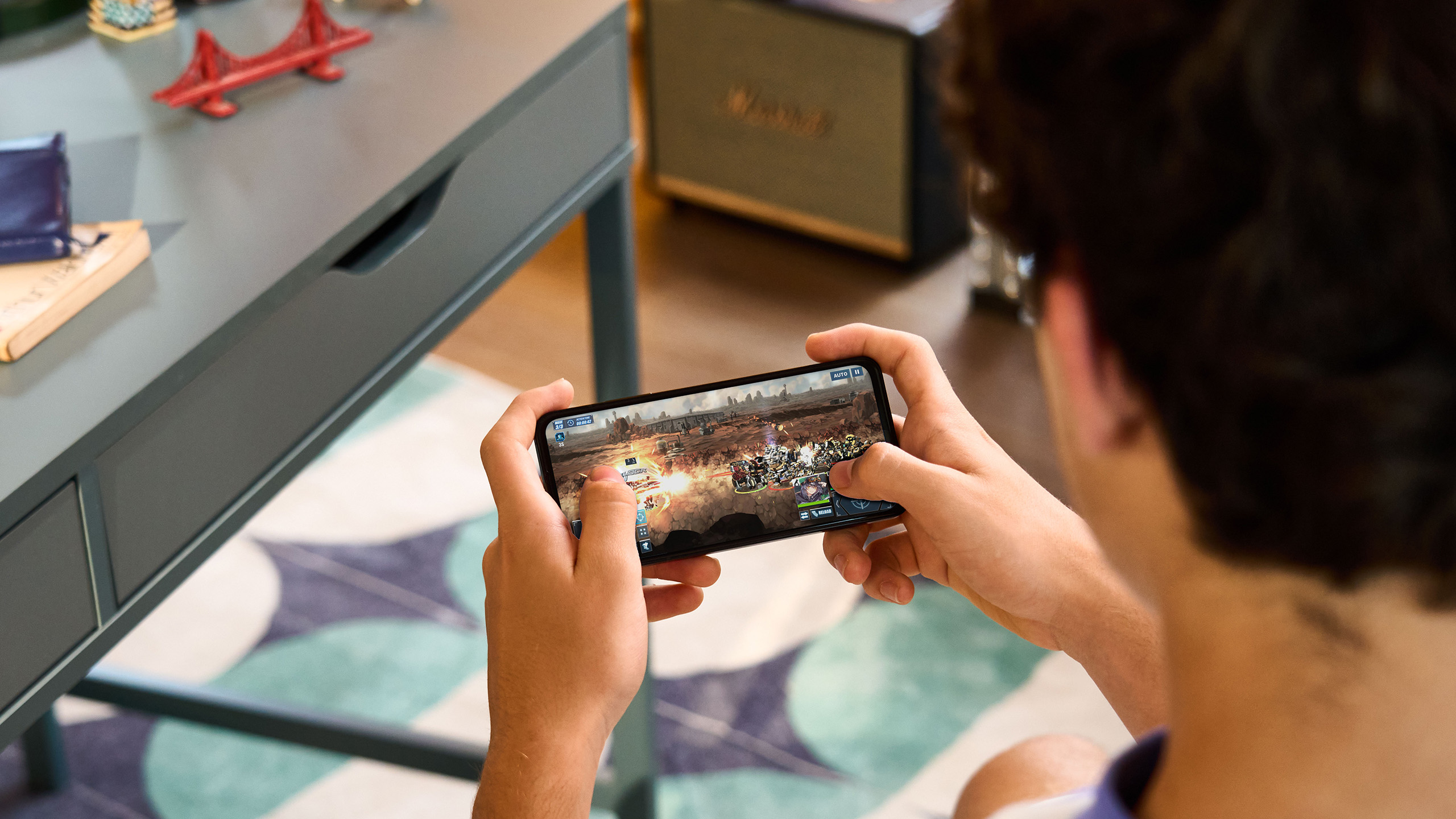
Wireless charging at last
The energy in the Zenfone 10 is provided by a 4,300 mAh battery. The same capacity as last year. But Asus has broken with a long-standing tradition by finally giving the mobile phone wireless charging. It’s a long-awaited and very useful improvement. Wireless charging is at 15 watts, which is nice, while wired charging is at 30 watts, which is slower than most – but faster than Google. Slow or not, Asus deserves credit for including a charger in the box.

Benchmarks
Our benchmark tests prove that there is no equivalence between “compact” and “scaled down.” The Asus Zenfone 10 is every bit as fast as its bulkier competitors. And then some. In several respects, it’s the fastest mobile phone we’ve tested!
The Geekbench 6 processor test ends with a result of 2,050 in single-core and 5,541 in multi-core. This is better than all Android mobiles to date, but is surpassed by the more than twice as expensive iPhone 14 Pro Max.
In return, the Zenfone 10 is – by a narrow margin – ahead of all mobiles in the AnTuTu 10 graphics test with a result of 1.57 million. Like its predecessor, the Zenfone 10 excels in the GFX Bench T-Rex test, scoring 6,686 frames. This is far better than most fast mobiles. But slightly below the Google Pixel 7 Pro.
The battery test ends with a result of 8:42 hours. In practice, this means one to two days of use, which is in line with competitors’ flagships. But all of them are distanced by the mid-range models, which in most cases run slowly but for a long time.

Conclusion
The Asus Zenfone 10 isn’t just the most powerful compact model on the market right now. It’s one of the most powerful Android mobiles on the market altogether – and in terms of speed, it’s on par with the best from Samsung, Xiaomi and OnePlus. At the same time, the Zenfone 10 has the best image stabilisation of any phone, paired with a pretty good camera section.
Despite all these advantages, it’s unlikely to change Asus’ position as a niche manufacturer. The brand loyalty of mobile phone buyers is too strong for that. But if you need a mobile phone that fits in a normal pocket and can take pictures under really difficult conditions, it’s impossible to ignore.
If you already have a Zenfone 9, you can safely skip the Zenfone 10. There are small improvements and the speed is 15-20 per cent faster. But it’s not a revolution. Better wait until next year, when we might hope that Asus may give us a telephoto lens.
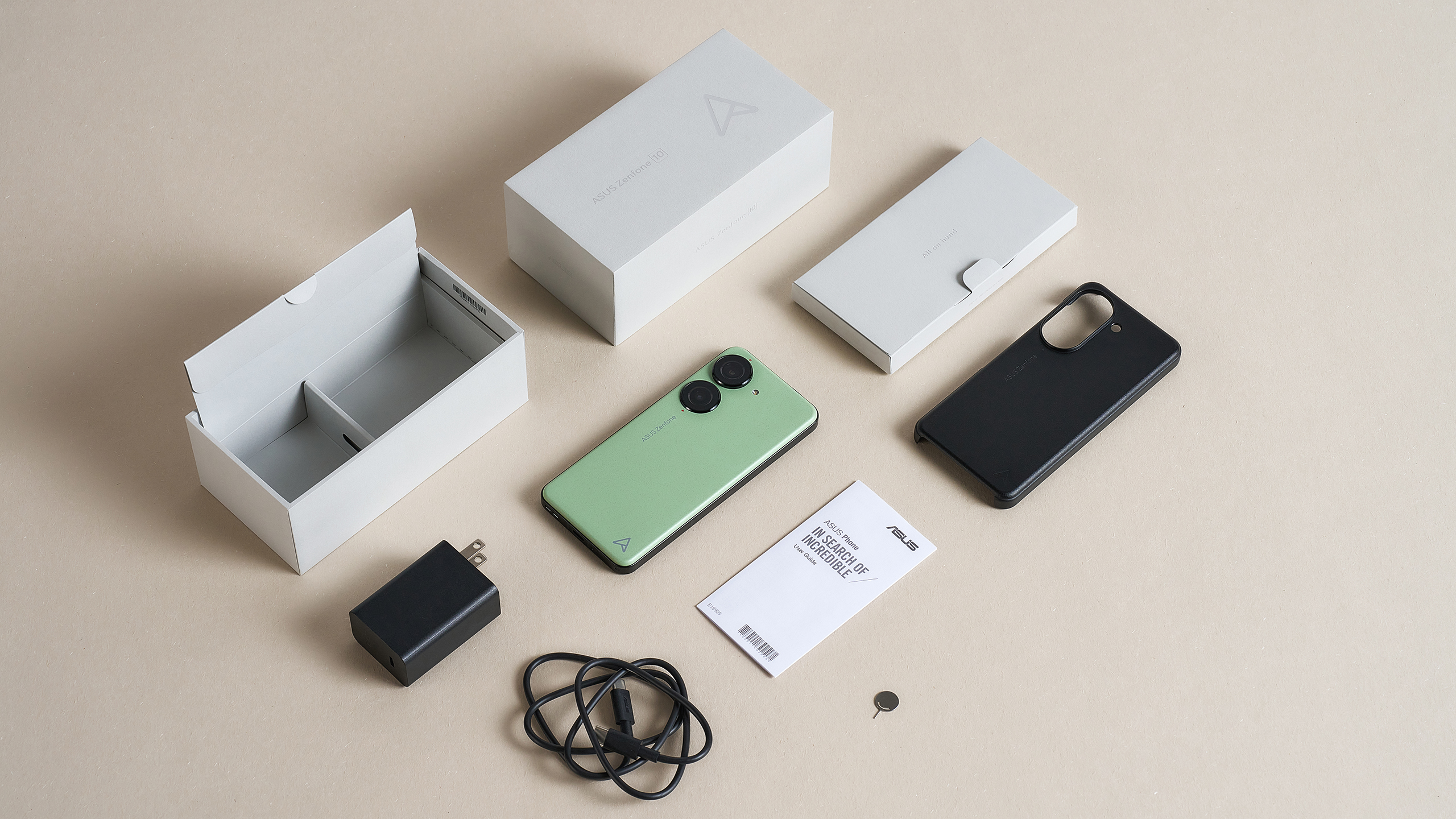

We think
A compact model with high-end performance - and at a premium price. At long last, with wireless charging. And still with the best image stabilisation on the market. Same main camera and wide angle as last year. A dedicated telephoto lens is still lacking.
929 €
Specifications
- Operating system: Android 13
- Display: 5.9″ AMOLED FHD+ (2400 x 1080) @144 Hz, 800 nits, 112% DCI-P3, HDR10+, Gorilla Glass Victus
- Processor: 3.2 GHz Qualcomm Snapdragon 8 Gen 2, octa-core + Adreno 740
- Memory: 16 GB RAM / 512 GB storage
- Cameras: 50 Mp wide angle (Sony IMX766) f/1.9, autofocus, w. 6-axis gimbal stabilisation. Ultra wide angle/macro: 12 Mp (Sony IMX363) f/2.2, autofocus, equivalent to 14.4 mm v. 35 mm film (primary), 32 Mp (front)
- Video: 8K@24 fps, 4K@60 fps, slow motion 4K@120 fps, FHD@240 fps
- Protection: IP68
- Connectivity: USB-C, headphone (3.5 mm stereo mini jack)
- Wireless: 5G, Bluetooth 5.2, Wi-Fi 6E, NFC
- Audio: LDAC, aptX, aptX Lossless, aptX HD, AAC
- Colours: Comet White, Midnight Black, Starry Blue, Aurora Green, Eclipse Red
- Dimensions and weight: 68.1 x 14.7 x 9.1 mm / 172 g
- Battery: 4,300 mAh, 30W HyperCharge, 15W wireless charging
- Web: asus.com
Benchmarks
Geekbench 6: 2.050 (single-core), 5.541 (multi-core)
Basemark GPU (OpenGL), medium: 19.467
AnTuTu 10: 1.564.967
PCMark Work 3.0: 17.577
3DMark Wild Life Extreme: 3.744
GFXBench: T-Rex: 6.686 frames
PCMark battery test: 8:25 hours


